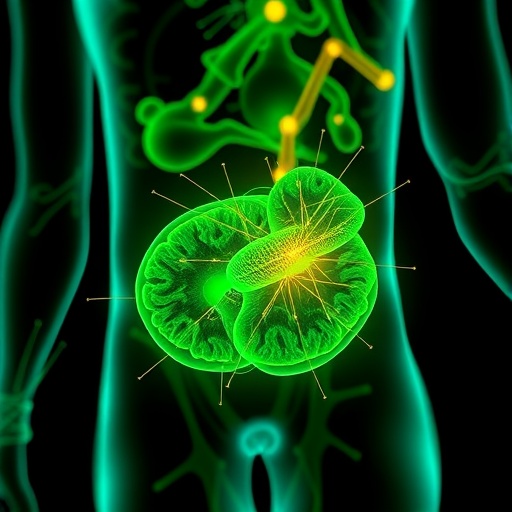In a groundbreaking advancement poised to reshape our understanding of cellular dynamics, Dr. Yu-Ming Mindy Huang, an assistant professor of physics and astronomy at Wayne State University, has secured a $1.98 million Maximizing Investigators’ Research Award (MIRA) from the National Institute of General Medical Sciences (NIGMS), part of the NIH. This prestigious five-year grant empowers Dr. Huang to pioneer next-generation computational modeling techniques, aiming to unlock the mysteries behind how proteins traverse and interact within the complex environments of living cells.
At the heart of Dr. Huang’s ambitious research lies a fundamental challenge in computational biology: reconciling the dichotomy between atomic-level precision and the ability to simulate biological processes over meaningful timescales. State-of-the-art computational tools today force scientists to choose either detailed snapshots at the atomic scale or broader, but less precise, temporal views that span significant biological events. This dichotomy hampers efforts to accurately capture the nuanced behaviors of membrane-bound proteins pivotal to cellular function and disease.
To overcome this limitation, Dr. Huang’s lab is innovating what can be described as a hybrid computational ‘microscope.’ This approach integrates multiscale modeling methods, meticulously designed to simulate protein diffusion and interactions on cellular membranes with unprecedented accuracy and depth. By merging fine-grained atomic simulations with extended temporal frameworks, this new methodology promises to bridge existing gaps in both resolution and duration, offering a holistic perspective of protein behavior in situ.
One of the central applications of this cutting-edge framework focuses on viral proteins, notably the spike protein of SARS-CoV-2—the causative agent of COVID-19. The diffusion and interaction patterns of this protein on the viral surface critically influence the virus’s ability to infect host cells and evade immune response. Dr. Huang’s models seek to capture these dynamic processes, yielding insights that could accelerate drug discovery pipelines and inform the design of next-generation vaccines and antiviral therapies.
Complementing this virological focus, Huang’s research also delves into the intricate regulatory networks governing lipid metabolism within cells. Specifically, the team investigates how proteins associated with lipid droplets—organelles responsible for fat storage—interact with their host membranes. Understanding these protein-membrane interactions is vital, as disruptions in lipid metabolism have been implicated in metabolic disorders such as diabetes and in the progression of certain cancers. The computational tools developed can thus elucidate mechanisms behind fat storage and mobilization, potentially guiding therapeutic innovations.
Dr. Huang underscores the significance of advancing these multiscale models by highlighting the current computational trade-offs limiting biological discovery. “The computer tools we use today force us to choose between atomic precision and simulating long enough to see a meaningful biological event,” she explains. The goal is a unified computational paradigm that offers both detail and temporal depth, thereby transforming how researchers visualize and interpret the molecular choreography of life.
Beyond the technical innovations, this research carries profound implications for public health and personalized medicine. By enabling precise simulations of protein dynamics, the new tools could facilitate bespoke drug designs tailored to the unique molecular landscapes of individual patients. This personalization heralds a move away from one-size-fits-all therapies toward more effective, targeted interventions.
Dr. Ezemenari M. Obasi, Wayne State’s vice president for research and innovation, lauds Dr. Huang’s work as exemplary in integrating computational modeling with medical insight. The NIH R35 MIRA program, known for supporting scientists with visionary, long-term research programs, recognizes the transformative potential of Huang’s interdisciplinary approach to tackling biological complexities.
The technological advance involves sophisticated algorithms capable of managing multiscale biological data sets. These algorithms are designed to intelligently shift focus between atomic interactions and larger-scale molecular behaviors, maintaining computational efficiency without sacrificing resolution. The result is a virtual environment where researchers can simulate and observe protein behavior within realistic cellular contexts over biologically relevant timeframes.
Such advancements are crucial in the study of membrane-bound proteins, which play essential roles in signaling cascades, transport processes, and cellular architecture. Traditional experimental methods, while invaluable, are limited in temporal or spatial resolution, creating a pressing demand for computational solutions that can fill these gaps. Dr. Huang’s work is at the forefront of this frontier, promising to deliver tools that can simulate these processes with unprecedented clarity and scope.
Moreover, the potential applications extend beyond biomedical research into fields such as synthetic biology and bioengineering. Understanding protein dynamics at the membrane interface informs the design of artificial systems that mimic cellular functions, potentially leading to novel biomaterials or therapeutic delivery systems. Thus, the ripple effect of this research may touch multiple scientific disciplines and industries.
Dr. Huang and her lab are poised to illuminate the elusive behaviors of proteins that orchestrate cellular life and disease. By marrying physics, computational science, and biology, their work represents a paradigm shift in how microscopic biological phenomena can be modeled, understood, and ultimately harnessed for human benefit.
As this research progresses over the next five years, the scientific community eagerly anticipates the tools, insights, and breakthroughs that will emerge. Dr. Huang’s innovative methodologies stand not only to deepen fundamental understanding but also to catalyze new therapies addressing infectious diseases, metabolic disorders, and cancer—ushering in a new era of computational biology empowered by precision and scale.
Subject of Research: Development of multiscale computational modeling tools to study the diffusion and interaction of membrane-bound proteins, focusing on viral proteins such as the SARS-CoV-2 spike protein and proteins regulating lipid metabolism.
Article Title: Wayne State Physicist Receives $1.98 Million NIH Award to Advance Protein Modeling in Living Cells
News Publication Date: Not specified
Web References: research.wayne.edu
Image Credits: Wayne State University
Keywords
Physics, Proteins, Protein analysis, Computational science
Tags: advanced computational tools in fat metabolismatomic-level precision in simulationsbiological processes over timescalescellular dynamics research fundingDr. Yu-Ming Mindy Huang researchhybrid computational microscope innovationMaximizing Investigators’ Research Awardmembrane-bound proteins and diseasemultiscale modeling techniquesNational Institute of General Medical Sciences fundingNIH grant for computational biologyprotein interactions in living cells





